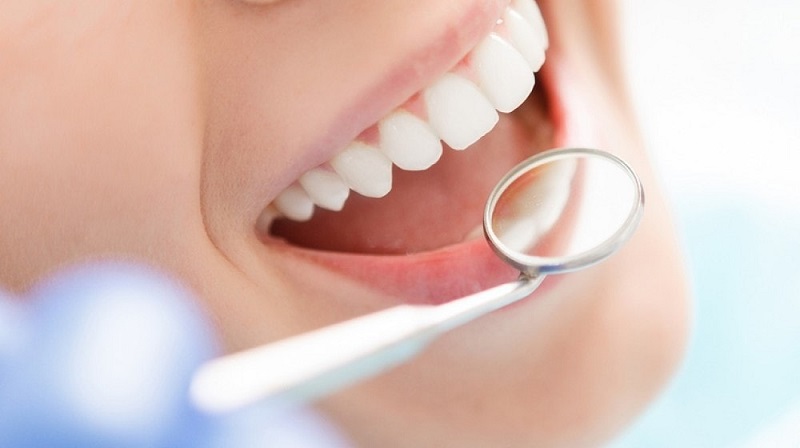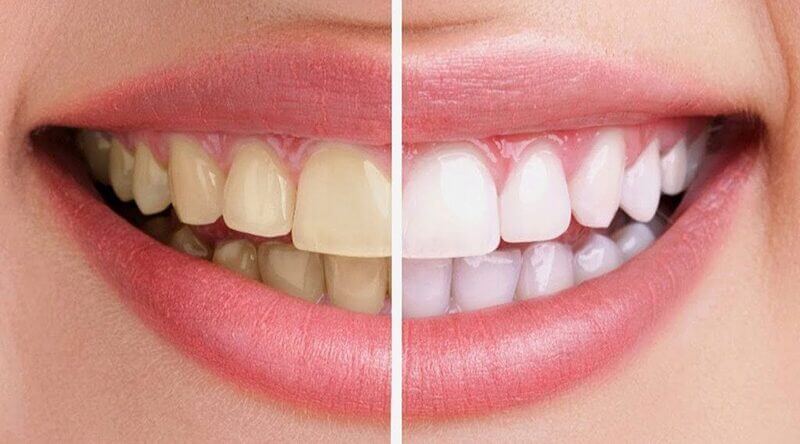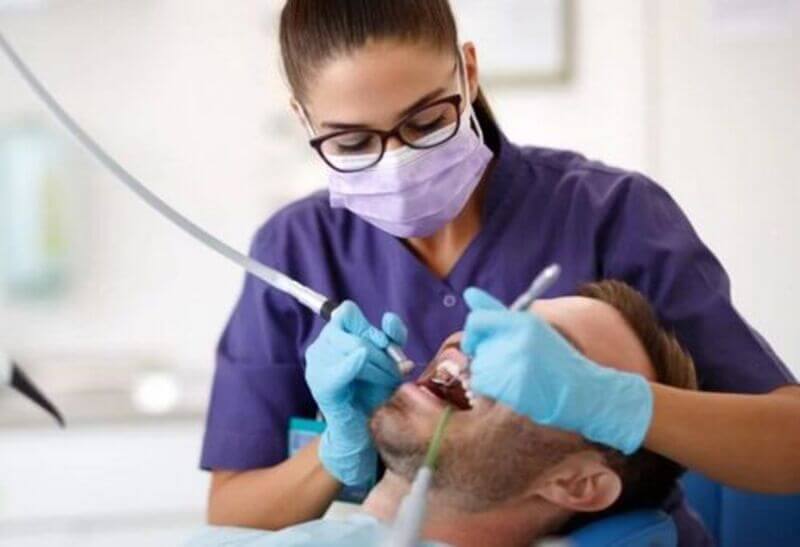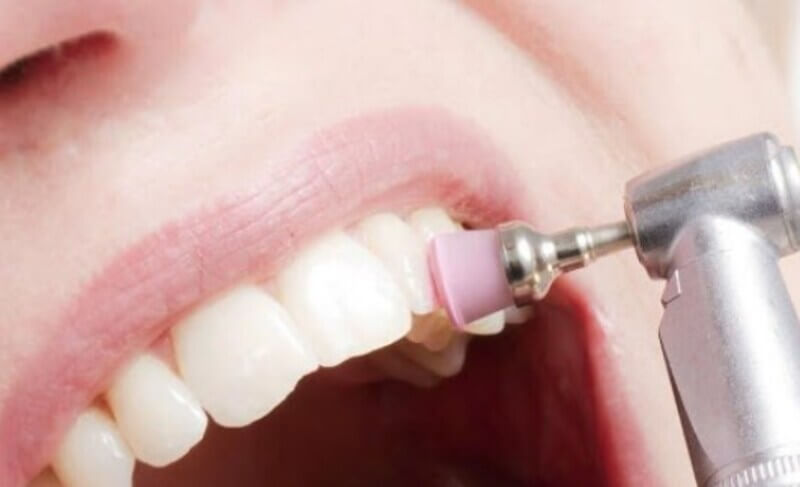Causes of Yellow Teeth

Contents:
The cause of yellow teeth is the discoloration of the enamel related to a polyetiological nature. It develops due to the prolonged effect of unhealthy habits, poor nutrition, drug therapy, disorder of internal organs, systems, etc. Today, it is pretty simple to solve the problem of the acquired defect of the tooth enamel shade – you need to visit a doctor, undergo the procedure of professional hygienic cleaning, and use high-quality oral care products. Inherited enamel features and pre-existing disease leading to discoloration of the teeth require more time and an individual approach.
Causes of Yellow Teeth and How to Avoid Them?

It is not possible to determine the nature of enamel yellowing reliably when examining the oral cavity. One can only assume a possible reason for the development of pathological abnormalities. If necessary, it is suggested to conduct detailed diagnostics of dental tissue structure and dentin properties assessment.
For example, if the tooth’s root area is yellow with a translucent shade, previous drug therapy can be suspected. A dark yellow coating indicates smoking, previous infection, pulmonary tuberculosis, or alcohol abuse. If earlier the teeth were white, then the appearance of yellowness is of an acquired secondary nature. If yellowish enamel is a natural state of the teeth, this refers to genetic changes.
Genetics
A genetic predisposition to yellow teeth is the central aspect in developing congenital forms of an unaesthetic shade. During the perinatal period, the fetus’s tooth buds are formed, determining the dentin structure and color. The typical shade of healthy enamel is ivory, rather than snow-white, as shown in the commercials.
The thicker and denser the dentin structure, the more beige the enamel layer will be. These teeth may appear yellow under specific lighting. Dentists claim that assumed yellowness indicates dental health and dense dentin is less susceptible to caries.
Food and Drinks
Nutritional factors play an essential role in changing the natural shade of the enamel. Certain eating habits and food preferences can thin out the enamel, cause discoloration and fragility of the teeth. In this case, exclude from the diet:
- alcohol;
- sweet soft drinks;
- staining products: red wine, black tea, strong coffee;
- crackers or seeds – regular damage to the enamel leads to its thinning and deterioration of the shade.
The systemic use of alcohol or very acidic drinks leads to demineralization of the enamel, becomes the cause of pathological changes in the structure of the teeth (dentin, root system, connective tissue elements).
Medicines and Fillings
Long-term drug therapy is one of the leading causes of yellow or gray staining of teeth. Most often, such changes are observed on baby teeth in young children. In pediatric dentistry, there is a separate term, ” tetracycline-stained teeth.” Broad-spectrum antibiotics for specific infections treatment often provoke the enamel layer’s darkening. These include fluoroquinolone, cephalosporin, macrolide.
Long-term antibiotic therapy leads to a change in the enamel’s shade due to a pigment synthesis violation. Sometimes, the yellowness goes away on its own, but the teeth need additional dental treatment more often. The appearance of blue, yellow, gray, and even greenish stains on the tooth enamel is caused by antibiotic therapy and a long course of hormonal drugs, psychotropic substances, antidepressants, and sedatives.
Medicines that a woman takes during pregnancy affect the shade of future teeth in children. Such yellowness is challenging to correct and requires radical methods of elimination, for example, the installation of veneers.
An old filling or an incorrect shade of filling material during treatment can cause yellowness of natural teeth. The solution to the problem is to open the preparation area, clean out the altered tissues and apply a new filling.
Aging and lack of care
Age-related changes negatively affect the condition of the skin, teeth, nails. This is due to a decreased level of organic matter, the collagen synthesis decline, a depletion of the vascular component, and a thinning of the enamel layer. Long-term smokers are at particular risk. Besides, the elderly have more chronic diseases that negatively affect the teeth’ condition and dentition.
In adulthood, it is impossible to restore the whiteness of the enamel. Therefore, dentists apply radical correction methods: prosthetics with crowns, installation of implant systems, veneers.
Yellowness is the result of poor-quality cleaning of the tooth enamel. Plaque and bacterial film hardens, making it difficult to remove at home.
Systemic Diseases
Chronic digestive disorders negatively affect the teeth, gums, and oral cavity in general. So, chronic gastritis, stomach and stercoral ulcer, constipation, chronic intoxication lead to vitamin and mineral absorption impairment.
There are other diseases associated with yellowing of the enamel:
- endocrine disorders, for example, diabetes mellitus, reduces the level of whiteness of the teeth;
- cancer and related treatment;
- metabolic disorders;
- autoimmune disorders;
- disorders of osteogenesis, osteoporosis;
- diseases of the liver, gallbladder, and hepatobiliary disorders – not only teeth turn yellow, but also tongue, skin, sclera.
All biochemical processes in the body are interconnected. Yellowing of tooth enamel requires careful and detailed diagnostics to exclude serious diseases.
Changes in Saliva Composition
The structure and viscosity of saliva change during chronic diseases of the ENT organs. Respiratory infections reduce saliva’s function, making it difficult to cleanse the oral cavity from dental plaque. Thick saliva leads to the accumulation of plaque and the development of a carious process. The composition of saliva changes with age, as well as with various pathologies of glandular tissue.
Diet and fasting
Severe dietary restrictions lead to a depletion of the diet, a sharp decrease in the concentration of vitamin and mineral complexes that enter the body with food. To improve teeth and hard tissues, a balanced diet, enrichment of food with biologically active additives, and multivitamins are recommended.
Yellowing after dental treatment

Most often, the shade of the enamel changes after the treatment of deep caries or pulpitis. This is due to tooth tissue and metabolic destruction at the removed neurovascular bundle. This is more often noticeable on the incisors and canines.
Yellowness on the teeth appears for several reasons and therefore requires special attention. The condition can cause an error in the diet or a symptom of severe pathology of the liver, thyroid gland, and other organs. The enamel may turn yellow in the area where the braces are attached. Long-term orthodontic treatment provokes a change in the shade of the enamel, especially with sensitive teeth. Changes in the shade of teeth can be caused by unfavorable ecology, poor quality of life, and social disadvantage.
How to Prevent Discoloration?
Regular oral hygiene helps to avoid yellow teeth. The use of an electric toothbrush, dental floss, rinses, and regular visits to a dentist involving a full mouth debridement helps keep teeth healthy in the future.
Basic principles of preserving teeth whiteness:
- hygienic cleaning – in case of rapid accumulation of plaque, professional cleaning is recommended at least 2 times a year;
- quitting smoking;
- reduced consumption of sweets, carbonated soft drinks, staining beverages (coffee, wine, tea);
- healthy diet;
- timely treatment of cavities and other pathological condition in the oral cavity,
- proper oral hygiene routine.
In the presence of concomitant diseases of organs or systems that lead to a change in smile appearance, it is essential to control background pathologies.
How to eliminate the imperfections of the enamel

If we talk about the enamel layer’s pathological yellowness, therapeutic dentistry is not enough. If standard procedures are ineffective, prosthetics are recommended.
Popular methods of teeth whitening for non-congenital yellowness:
- professional cleaning;
- professional teeth whitening;
- home whitening with trays and special gel.
The specialists of the Clinic of Aesthetic Dentistry offer a wide range of different methods of teeth whitening. You can get a beautiful and snow-white smile in just one visit and keep the result for a long time. The procedure for hygienic cleaning and whitening is available to every patient and is a part of a full mouth debridement procedure.



